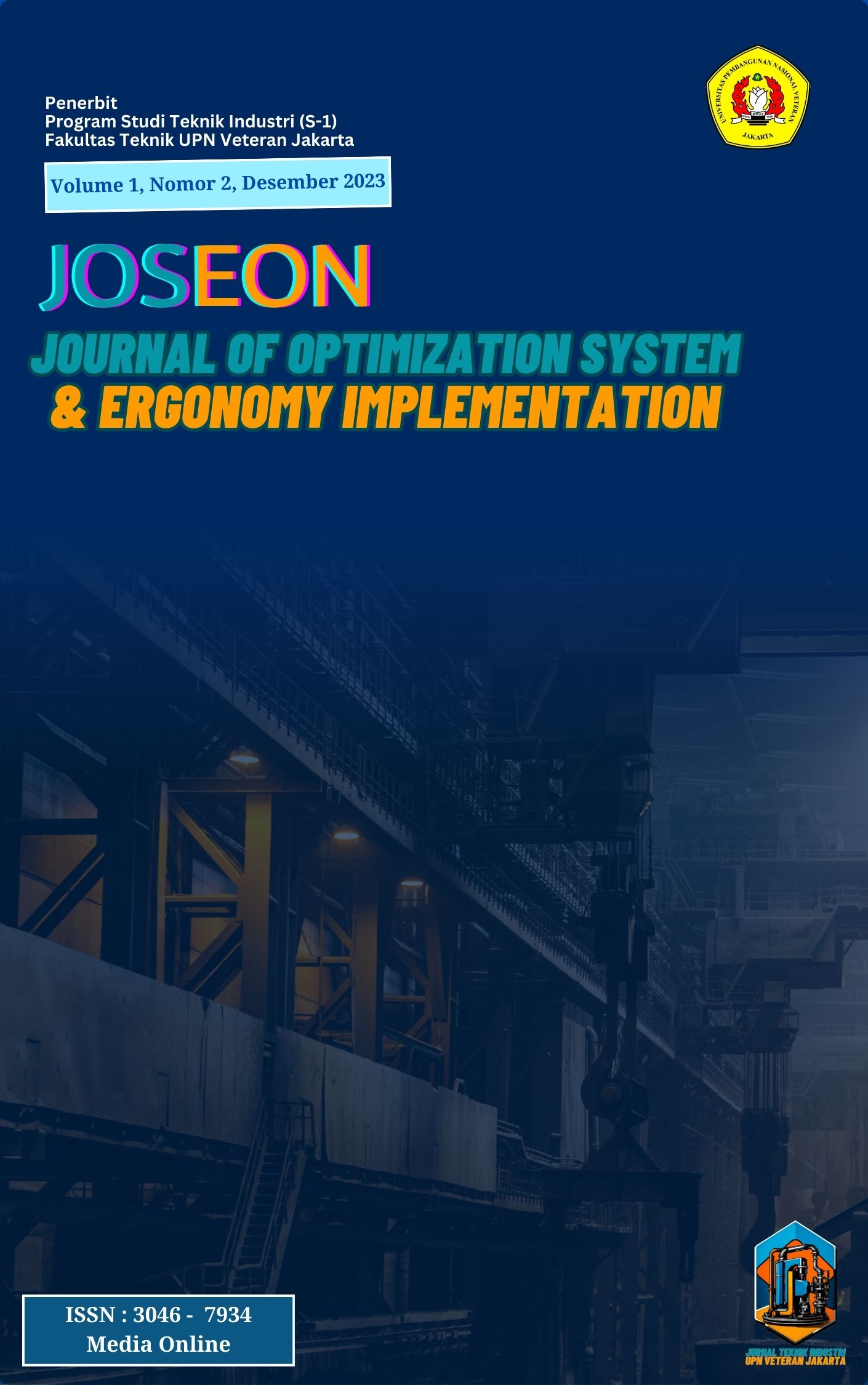Improvement of Warehouse Facility Layout Using Dedicated and Class-based Storage Methods at PT Mitra Sarana Mahadana
DOI:
https://doi.org/10.54378/joseon.v1i02.7473Keywords:
dedicated storage, class-based storage, warehouse layout, simulationAbstract
PT Mitra Sarana Mahadana is a company engaged in the sale of PVC ceilings, PVC ceiling trim, and hollows. However, the products stored at this company are stored randomly, causing product damage when product pick-up is carried out. In addition, this random placement also causes a long search time to find a particular product so that time causes product retrieval to be inefficient and product damage causes storage to be ineffective. Therefore, improvements are needed using dedicated storage methods, class-based storage, and proposed improvements simulated using Arena. This study resulted in a conclusion in the form of a dedicated storage method succeeded in reducing the travel distance by 46.56% from the actual distance of 9,056.57 meters to 4,840.05 meters. From the simulation results, it was found that the dedicated storage method succeeded in reducing the product transfer process time by 79.85% from the actual time of 130 seconds to the proposed condition time of 26.2 seconds.
References
J. A. Tompkins, J. A. White, Y. A. Bozer and J. M. A. Tanchoco, Facilities Planning Fourth Edition, John Wiley & Sons, 2010.
D. E. Mulcahy, Warehouse Distribution & Operations Handbook, McGraw-Hill, 1994.
Santoso and R. M. Heryanto, Perancangan Tata Letak Fasilitas, Bandung: Alfabeta, 2020.
E. R. Wijaya and M. A. Maulana, "Layout Analysis of Goods Storage: Case Study Spare Part Warehouse Z Company," Jurnal Rekayasa Sistem Industri, vol. 11, pp. 47-56, 2022.
S. S. Heragu, Facilities Design, 4 ed., London: CRC Press, 2016.
C. Harrell, B. K. Ghosh and R. Bowden, Simulation Using ProModel, 2nd ed., McGraw-Hill, 2004.
F. Andrea, S. Laura and M. Schiraldi, "Minimizing Warehouse Space with a Dedicated Storage Policy," International Journal of Engineering Business Management, 2013.
O. Audrey, W. Sukania and S. R. Nasution, "Analisis Tata Letak Gudang dengan Menggunakan Metode Dedicated Storage," ASIIMETRIK: Jurnal Ilmiah Rekayasa dan Inovasi, vol. 1, pp. 43-49, 2019.
F. T. Chan and H. Chan, "Improving the productivity of order picking of a manual-pick and multi-level rack distribution warehouse through the implementation of class-based storage," Expert Systems with Applications, vol. 38, no. 3, pp. 2686-2700, 2011.
A. S. Indrawan and Santoso, "Perbaikan Tata Letak Gudang Distribusi dengan Data Mining, Dedicated Storage, dan Multi-Product Slot Allocation," Jurnal Teknik Industri, vol. 12, pp. 9-20, 2022.
M. Jamaludin, "The Influence of Supply Chain Management on Competitive Advantage and Company Performance," Uncertain Supply Chain, vol. 9, pp. 696-704, 2021.
Kulsum, Muharni, Yusraini and A.-A. A. Felayani, "Usulan Pengoptimalan Tata Letak Gudang W12 Menggunakan Kebijakan Dedicated Storage dengan Penerapan Simulasi (Studi Kasus: PT XYZ)," Teknika: Jurnal Sains dan Teknologi, vol. 16, pp. 285-292, 2020.
T. N. Larson, H. March and A. Kusiak, "A heuristic approach to warehouse layout with class-based storage," IEE Transactions, vol. 29, pp. 337-348, 1997.
A. M. Law and W. D. Kelton, Simulation Modeling and Analysis, 2nd ed., Singapore: McGraw-Hill, 1991.
M. Lee and E. A. Elsayed, "Optimization of warehouse storage capacity under a dedicated storage policy," International Journal of Production Research , vol. 43, no. 2005, pp. 1785-1805, 2005.
Downloads
Published
How to Cite
Issue
Section
License
Copyright (c) 2023 Journal of Optimization System and Ergonomy Implementation

This work is licensed under a Creative Commons Attribution-NonCommercial-ShareAlike 4.0 International License.











